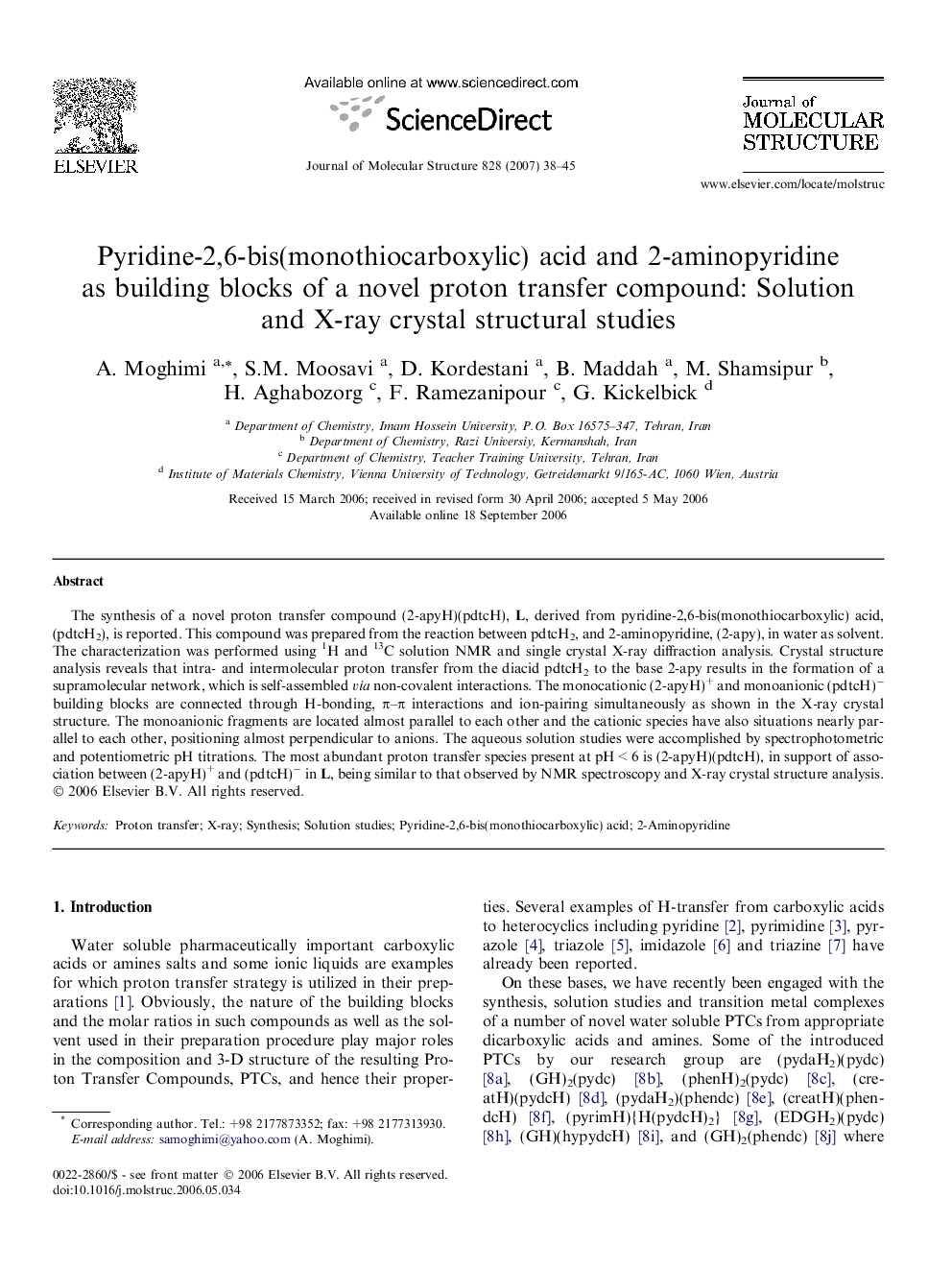| Article ID | Journal | Published Year | Pages | File Type |
|---|---|---|---|---|
| 1411890 | Journal of Molecular Structure | 2007 | 8 Pages |
The synthesis of a novel proton transfer compound (2-apyH)(pdtcH), L, derived from pyridine-2,6-bis(monothiocarboxylic) acid, (pdtcH2), is reported. This compound was prepared from the reaction between pdtcH2, and 2-aminopyridine, (2-apy), in water as solvent. The characterization was performed using 1H and 13C solution NMR and single crystal X-ray diffraction analysis. Crystal structure analysis reveals that intra- and intermolecular proton transfer from the diacid pdtcH2 to the base 2-apy results in the formation of a supramolecular network, which is self-assembled via non-covalent interactions. The monocationic (2-apyH)+ and monoanionic (pdtcH)− building blocks are connected through H-bonding, π–π interactions and ion-pairing simultaneously as shown in the X-ray crystal structure. The monoanionic fragments are located almost parallel to each other and the cationic species have also situations nearly parallel to each other, positioning almost perpendicular to anions. The aqueous solution studies were accomplished by spectrophotometric and potentiometric pH titrations. The most abundant proton transfer species present at pH < 6 is (2-apyH)(pdtcH), in support of association between (2-apyH)+ and (pdtcH)− in L, being similar to that observed by NMR spectroscopy and X-ray crystal structure analysis.
